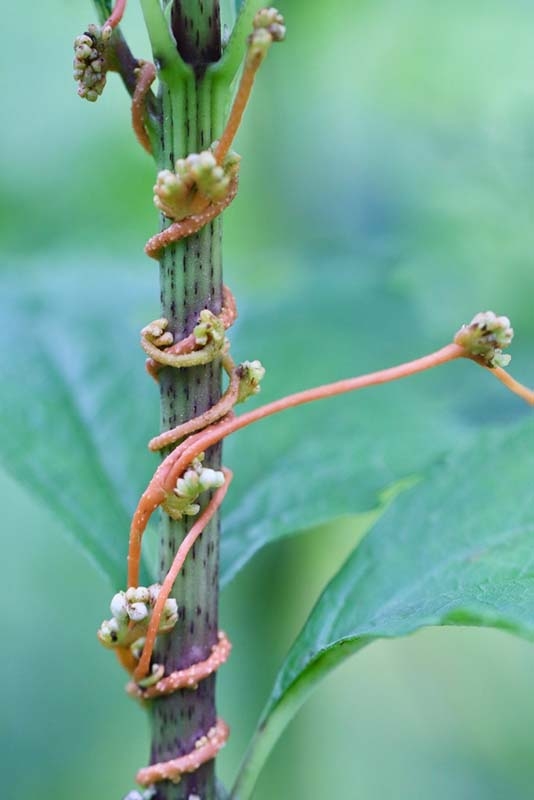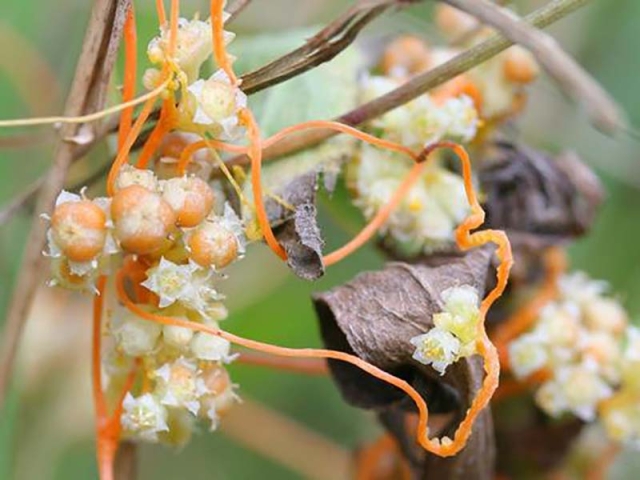Vampire Plants, Just in Time for Spooky Season
A spooky plant to look for this Halloween is Cuscuta, usually referred to as dodder but also known as strangle vine, witch’s shoelaces and even devil’s guts. Cuscuta is also an example of a “vampire plant,” or a parasitic plant that taps into other plants for all its nutrient needs. To obtain these nutrients, dodder uses a specialized root called haustoria (their “fangs”) to penetrate and invade the vascular tissues of plants, thus obtaining water, minerals and carbohydrates directly from their hosts. The roots of dodders die after attachment has been made, such that the plants are entirely dependent on these hosts for survival. And just like a real vampire, dodder even needs an “invitation” to step into their host’s vascular tissues, communicating through DNA with its host to lower its defenses.

Image credit: Photo 46721799, copyright allysonv
Cuscuta are parasitic on a variety of different host species but have a particular affinity for crop plants and weeds such as alfalfa, many aster family members, tomato, lambsquarter, pigweed and bindweed. Cuscuta’s common names allude to their characteristic long strands of yellowish stems that form mats and wrap around other vegetation, often appearing to “strangle” their host plants. As members of the Convolvulaceae, or morning glory family, Cuscuta also exhibit flowers with the corolla lobes fused together, but the flowers are much smaller than those of a typical morning glory.

Image credit: Photo 2674013, copyright Fabelfroh
Dodder seeds can sprout without a host nearby. Once germinated, dodder seedlings use airborne chemosensory cues to grow towards nearby plants that they can tap into for food. However, if the plants do not reach a suitable host within five to 10 days of germination, the seedlings will die. Cuscuta are notoriously difficult to identify to species. There are currently four species reported from the Denver-Boulder metro area: C. approximata, C. campestris, C. cuspidata and C. indecora.
During the month of October, the Denver EcoFlora Project is collecting observations of Cuscuta on iNaturalist. See if you can locate some Cuscuta and help Denver Botanic Gardens by photographing as many plants as possible this month. Post your findings to iNaturalist so they will automatically be added to the Denver EcoFlora Project.
Add new comment